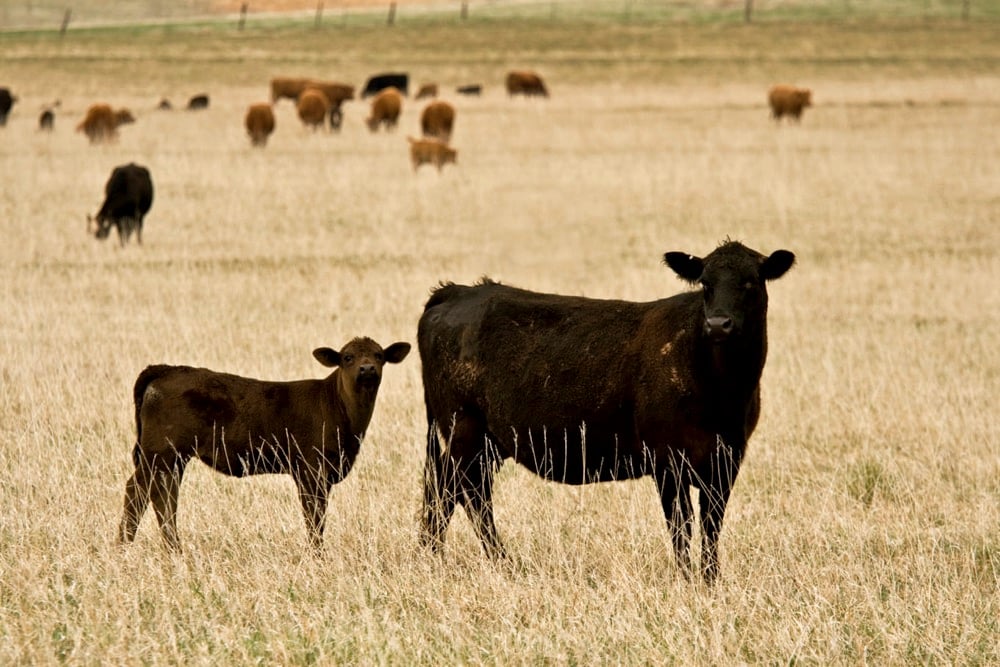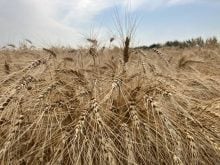By Theopolis Waters
CHICAGO, Feb 19 (Reuters) – Chicago Mercantile Exchange live cattle ended mostly lower on Wednesday, with February futures supported by rising wholesale beef prices, while profit-taking pressured remaining contracts, traders said.
February live cattle closed up 0.125 cent per pound at 143.875 cents. April ended at 141.825 cents, 0.300 cent lower, and June settled down 0.450 cent at 133.075 cents.
Fewer cattle for sale this week and improved wholesale beef values offered positive CME live cattle influences, said Brock Associates Inc analyst Doug Houghton.
Conversely, extremely negative packer margins cast doubt about cash prices for this week, he said.
Read Also

Klassen: Feeder market extends rally
Western Canadian yearling prices traded back up to historical highs over the week ended Oct. 18, while calf markets made…
Packers have not responded to sellers who are asking up to $145 per hundredweight (cwt) for their cattle, feedlot sources said. Last week, cash cattle in the U.S. Plains sold from $142 to $143, they said.
Wednesday morning’s wholesale choice beef price was $212.85 per cwt., up 86 cents from Tuesday. Select cuts rose 73 cents to $211.45, according to the U.S. Department of Agriculture.
Investors await USDA’s monthly Cattle On Feed report, which will be issued on Friday.
Analysts expect the data to show U.S. feedlots last month likely brought in more young cattle for fattening as record-high cattle prices improved their profits, according to most analysts polled by Reuters.
Profit-taking and higher corn prices dropped feeder cattle futures from early-session contract highs.
March ended down 0.525 cent per lb at 171.175 cents after posting a new contract high of 172.100 cents in electronic trading.
April finished at 172.450 cents, 0.750 cent lower, and hit a fresh contract high of 173.475 cents.
MOST HOGS RISE AS SPECS BUY
Most CME hogs rose to new contract highs as speculative traders bought deferred contracts and sold April futures in a practice known as bear spreading, traders said.
Bearish spreads were driven by anticipation of fewer hogs this summer as cases of the Porcine Epidemic Diarrhea virus, which is deadly to baby pigs, increase on U.S. and Canadian hog farms.
Some buyers were discouraged by April future’s premium to the exchange’s hog index at 87.41 for Feb. 17. The index rose 84 cents from Friday despite ample supplies and periodic wholesale pork price weakness.
“The question is to what extent has winter weather over the past few weeks backed up supplies,” Houghton said.
The morning’s average price of hogs in the closely watched Iowa-Minnesota market climbed 58 cents per cwt to $88.91, according to USDA.
USDA data showed packers processed 430,000 hogs on Wednesday, 46,000 more than a week ago and up 9,000 from a year ago.
April hogs settled at 97.200 cents per lb., down 0.175 cent after spiking to a new contract high of 97.925 cents.
June finished at 107.500 cents, 0.175 cent higher. It posted a new high for the contract at 108.150 cents. July ended 107.350 cent higher, up 0.250 cent after hitting a fresh contract high of 107.825 cents.














